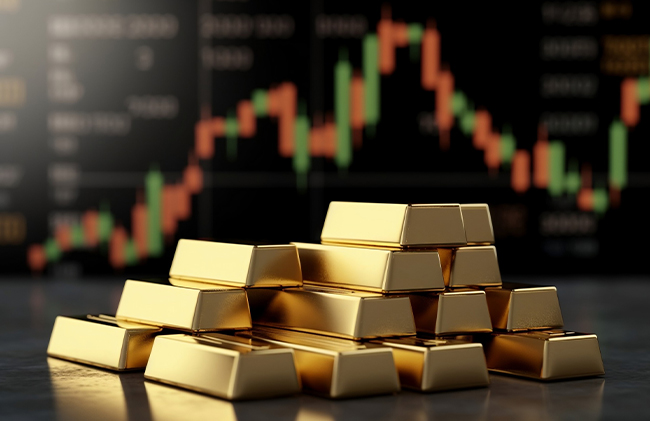
If you've ever wondered about the intricate dynamics that govern the price of gold, you're not alone. Gold, a precious metal with an allure that spans centuries, has been a symbol of wealth, power, and beauty. In this article, we'll delve into the fascinating world of gold pricing and explore the factors that influence its value.
Introduction to Gold Pricing
Gold is a rare and finite resource, which contributes significantly to its high value. But what sets the price of gold in the market? Understanding the process of gold pricing requires a closer look at the various stakeholders involved in this complex ecosystem.
The Role of Supply and Demand
At the heart of any commodity's pricing lies the classic economic principle of supply and demand. Gold is no exception. The interplay between the available supply of gold and the demand for it drives the pricing fluctuations.
1. Supply Factors
The production and mining of gold play a crucial role in determining its supply. Several key factors influence the supply side:
Mining Output
The quantity of gold extracted from mines worldwide has a direct impact on the overall supply. New discoveries, technological advancements in mining, and geopolitical factors can all influence mining output.
Recycled Gold
Recycling plays an essential role in the supply chain. Gold is recycled from various sources, including jewellery, electronics, and industrial waste. The recycling rate affects the availability of gold for new uses.
2. Demand-Side Factors
Gold has a multitude of applications, from jewellery and investment to industrial uses. Demand for gold can be influenced by various factors:
Investment Demand
Gold has historically been a safe-haven asset during economic uncertainties. Investors flock to gold as a hedge against inflation and economic downturns.
Jewellery Demand
Cultural preferences and traditions drive the demand for gold jewellery in different regions. Celebrations and festivals often boost the demand for ornamental gold.
Industrial Uses
Gold's unique properties, such as conductivity and resistance to corrosion, make it valuable for various industrial applications, including electronics and medical devices.
The Role of Central Banks
Central banks also play a critical role in the gold market. These institutions hold significant gold reserves, often referred to as "official gold reserves." The decisions made by central banks regarding gold reserves can influence gold prices.
1. Buying and Selling by Central Banks
Central banks can buy or sell gold as part of their monetary policy. Large-scale purchases or sales by central banks can create ripples in the gold market.
2. Gold Repatriation
In recent years, some countries have opted to repatriate their gold reserves. The decision to bring back gold held in foreign vaults can garner attention from market participants.
Geopolitical and Economic Factors
Gold prices can be sensitive to geopolitical tensions and economic indicators. Investors closely monitor these events as they can significantly impact the global economy and financial markets.
1. Geopolitical Tensions
Uncertainty caused by geopolitical conflicts can trigger a flight to safety, leading investors to seek refuge in gold.
2. Economic Indicators
Economic indicators, such as GDP growth, employment rates, and inflation, can affect investor sentiment and influence gold prices.
Market Speculation and Sentiment
Market speculation and investor sentiment can lead to short-term price fluctuations. Traders, speculators, and even media coverage can amplify the volatility of gold prices.
In conclusion, the price of gold is a result of a complex interplay of supply, demand, geopolitical and economic factors, central bank policies, and market sentiment. Understanding these dynamics is crucial for investors, policymakers, and anyone intrigued by the allure of gold.
FAQs
Why is gold considered a valuable metal?
Gold's scarcity, beauty, and various applications in jewellery and industry contribute to its high value.
What is the relationship between gold prices and economic indicators?
Economic indicators, such as GDP growth and inflation, can influence investor sentiment and, in turn, gold prices.
Do central banks influence gold prices?
Yes, central banks' decisions regarding gold reserves can impact the gold market.
How does gold recycling affect its supply?
Recycling gold from various sources influences the overall supply of gold available in the market.
Why do investors consider gold a safe-haven asset?
Gold is considered a safe-haven asset because it retains value during economic uncertainties.

















